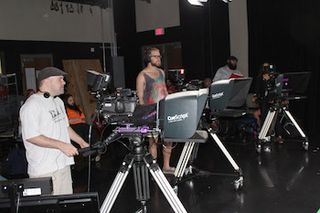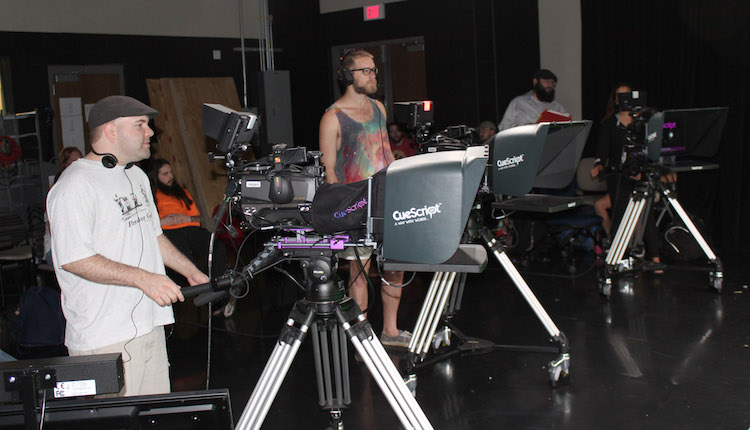
Radford University students using the school’s new HITACHI Z-HD5000 cameras. Radford University in Redford, has earned a strong reputation for its use of technology in the learning environment. When the school recently upgraded its educational television production studio to a fully HD environment, it purchased four Z-HD5000 cameras from Hitachi Kokusai Electric America to provide reliable, high-quality video capture while giving students hands-on experience with professional equipment.
Radford University is a comprehensive public university with more than 9,400 enrolled undergraduate and graduate students. As part of the College of Humanities and Behavioral Sciences, the university’s School of Communication offers a choice of Communication or Media Studies majors, within which students can focus on particular concentrations.
The production technology program prepares students for positions in creative production in corporate, industrial, and other professional environments, as well as working in the areas of web, multimedia, radio and television and field production. With construction of the college’s new building completing last year, the School of Communication was looking to update its production abilities.
“Our objective was to upgrade our studio to a fully high definition setup,” said Michael J. Meindl, assistant professor of media production in the School of Communication at Radford University. “The systems integrator for our new studio, Digital Video Group (DVG), suggested the HITACHI Z-HD5000 cameras to us, satisfying our specifications including quality standards and expandable optical fiber connectivity.”
The Z-HD5000s are now used in many of the school’s video production courses, which explore a variety of production types ranging from sitcoms to newscasts. Three of the Z-HD5000s are manually operated on tripods and used in classes spanning on-camera performance, electronic field production—teaming up with electronic news gathering students in the school’s journalism concentration—and TV studio production. The fourth camera is deployed in a robotic configuration with a Ross Video CamBot pan/tilt head, with the robotics, zoom, and focus controlled over a TCP/IP network.
Productions created by the students are distributed online, with a new on-campus television channel in the process of being deployed. Students also film stand-ups in front of a green screen for background compositing, with the results used to promote various programs around the university.













